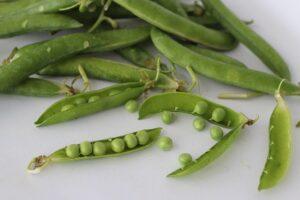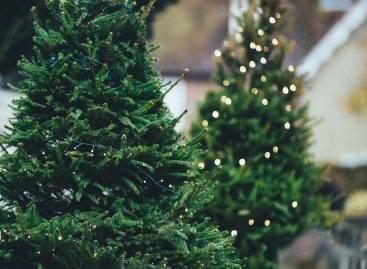Green pea growers are ending a difficult year
This year brought a particularly bad season for green pea producers. The green pea production area was halved compared to previous years, and due to the mild, dry spring, the average yield fell far short of expectations. Hungary, which used to be the third largest green pea producer in Europe, experienced a significant decline. To maintain our position, we will need new varieties, modern technologies and cooperation.

(Photo: Pixabay)
Previously, green peas were one of the most predictable products, but since 2021, the market has been completely uncertain. Last year’s prices were also halved this year, and the refrigeration and canning industry signed contracts for much fewer raw materials than before. Many of the producers complain that the pea growing area has decreased by up to sixty percent compared to last year. Energy costs and lack of rainfall also increase the cost of cultivation. With intensive technology, the cost of irrigating one hectare can reach HUF 650,000.
At the beginning of the season, there were still significant last year’s stocks in the cold stores, which contributed to the low purchase prices
Gábor Fülöp Jr., member of the board of Agrosprint Zrt., said that this year the harvest started much earlier than usual, in the middle of May. This is unprecedented since the company’s thirty years of existence, since under normal circumstances work starts at the beginning of June. However, due to the effects of the weather, the harvest started three weeks earlier this year.
The yield of early-type peas this year fell far short of expectations
The previous average was one and a half to two tons per hectare, but now it was not even double that. Due to the low purchase prices and the low yield, sustainable farming has also been put in jeopardy. The yield is better than medium-ripe peas, but there are significant regional differences, and the hailstorms made the situation even worse. The production plans supported by the processors also fall far short of the plan, and a yield loss of at least ten percent must be expected. According to Ferenc Apáti, the president of the FruitVeb Vegetable and Fruit Trade Organization and Product Council, multi-year price contracts would be beneficial for both producers and processors. Last year, raw material prices rose very high: the purchase price of sweet corn was HUF 110 per kilogram, and that of green peas was HUF 230, which was favorable for producers. Due to high yields and prices, pea cultivation was profitable last year. However, with frozen and canned goods made from expensive raw materials, the processing industry found it difficult to keep up with the market. After the price increases in 2022, prices started to fall last year, and when finished products had to be produced from expensive raw materials, this situation backfired. The consequence of this is that this year the price of sweet corn has halved, and the price of green peas has dropped by forty percent, which has created a difficult situation for producers. This situation is not favorable for processors either, since it will be difficult for everyone to get back up after such a setback.
novenyvedoszer.hu
Related news
AM: Government helps farmers with a loan moratorium
🎧 Hallgasd a cikket: Lejátszás Szünet Folytatás Leállítás Nyelv: Auto…
Read more >More than 100 Hungarian farmers also demonstrated in Brussels
🎧 Hallgasd a cikket: Lejátszás Szünet Folytatás Leállítás Nyelv: Auto…
Read more >NAK: Domestic producers await customers with an ample supply of all pine species
🎧 Hallgasd a cikket: Lejátszás Szünet Folytatás Leállítás Nyelv: Auto…
Read more >Related news
Hungary’s economy in 2025: recovery from slowdown, weaker forint and the increasing importance of corporate strategic decisions 2026 will be a test of resilience
🎧 Hallgasd a cikket: Lejátszás Szünet Folytatás Leállítás Nyelv: Auto…
Read more >NAK: it’s worth buying Hungarian sausages on New Year’s Eve too
🎧 Hallgasd a cikket: Lejátszás Szünet Folytatás Leállítás Nyelv: Auto…
Read more >Digital overhead is an increasingly serious item in the family budget
🎧 Hallgasd a cikket: Lejátszás Szünet Folytatás Leállítás Nyelv: Auto…
Read more >






